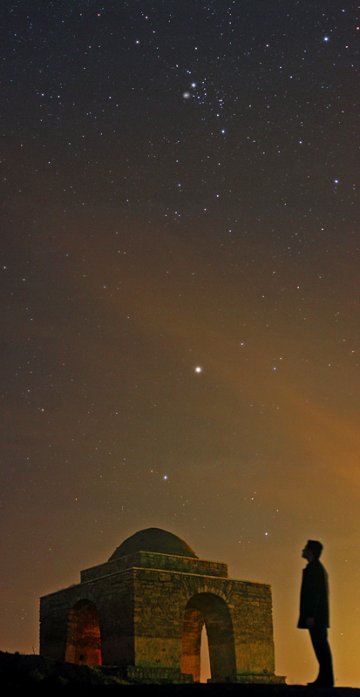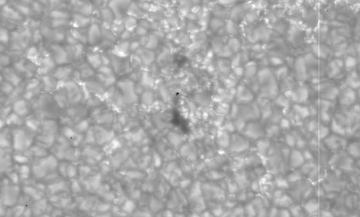 Where's Saturn? Is that a UFO--or the ISS? What's the name of that star? Get the answers from mySKY--a fun new astronomy helper from Meade. Where's Saturn? Is that a UFO--or the ISS? What's the name of that star? Get the answers from mySKY--a fun new astronomy helper from Meade. ARIZONA LEONIDS: The 2007 Leonid meteor shower peaked this morning. In most places the display was muted, but not in Portal, Arizona: "Wow! I witnessed a great display," reports Brian Whittaker who spent the hours before dawn watching the dark skies above Jack Newton's Arizona Sky Village. "There were many bright, quick Leonids, including this rainbow colored meteor." Earth may have run into a small filament of comet dust just before the sun came up over Arizona; Brian was in the right place at the right time for a good show. COMET 17P/HOLMES: "Comet Holmes is now very close to Mirfak, the brightest star of the constellation Perseus," reports Babak Tafreshi of Niasar, Iran. "Here the duo is shown over the 1600-year old fire temple of Niasar in Iran used for centuries by Zorostrians." 
On Monday, Nov. 19th, Comet Holmes will swallow Mirfak! Not really, but the comet will pass directly in front of the star and the star will shine through the comet's vast translucent atmosphere. The overall effect will be that of a giant space-faring jellyfish swallowing a phosphorescent treat. Astronomers, ready your telescopes! Comet 17P/Holmes Photo Gallery
[Interactive World Map of Comet Photos]
[sky map] [ephemeris] [3D orbit] [Night Sky Cameras] TINY SUNSPOT: Sunspot 974, which emerged just two days ago, is already fading to invisibility. Earth-based telescopes can barely see it, but Japan's Hinode spacecraft reveals that the sunspot is still there: 
We see why scientists call Hinode "a Hubble for the sun." The fading remnant of sunspot 974 is not much bigger than the state of California. The Solar Optical Telescope (SOT) onboard Hinode can discern state-sized objects 93 million miles away! The many blobs surrounding sunspot 974 are solar granules. They resemble blobs of water boiling in a pan atop a hot stove--and indeed that is essentially what they are. The surface of the sun is boiling because it sits atop the sun's inner 15-million-degree C nuclear furnace. Watching granules rise and fall is a favorite activity of some solar physicists: movie. | 
